Have you ever read something and suddenly the dots are connected? This is what happened to me while I was listening to On Photography by Susan Sontag.
Let me back up a few steps. Recent posts by Jennifer Nicole Wells have inspired me to take another look at my own photography. Part of that process was finally reading On Photography by Susan Sontag. (Ok I didn’t really read it, I listened to the audio version). When I was attending university, Susan Sontag’s book was extremely influential, yet I never found time to read it. Even if I had read it, I doubt I would have understood half of what she said. Sometimes you can only learn when you’re ready.
As I’m enjoying this short listen I was struck by a few of the quotes on the power of the photograph to render everything beautiful.
‘But many, through photographs, have discovered beauty. Except for those situations in which the camera is used to document, or to mark social rites, what moves people to take photographs is finding something beautiful. (The name under which Fox Talbot patented the photograph in 1841 was the calotype: from kalos, beautiful.) Nobody exclaims, “Isn’t that ugly! I must take a photograph of it.” Even if someone did say that, all it would mean is: “I find that ugly thing … beautiful.”’ pg 85
“But notwithstanding the declared aims of indiscreet, unposed, often harsh photography to reveal truth, not beauty, photography still beautifies. Indeed, the most enduring triumph of photography has been its aptitude for discovering beauty in the humble, the inane, the decrepit.” – pg 102
Make it Seem
These quotes immediately transported me to two previous posts on beauty. The first post is Make it Seem, a photo challenge posted by Kristina. The point of the challenge was to create an image that had the opposite effect on the viewer than the subject matter might suppose. At least this is how I interpreted the task. I’m still stumped by this challenge because my images only look one way to me – beautiful. I couldn’t capture the emotional response I was looking for. My images don’t look sad, shocking or urgent to me. They looked beautiful; they look pretty.
No matter how hard I tried, the end result was (at least in my mind) a beautiful image. I felt I was failing the challenge. But after reading On Photography, I realize that we only point our cameras at what we feel is ‘beautiful’. How you define beautiful is up to you. It could be a moment of light, a particular gesture, a bit of rust, the way blood splashes across a battle field…you get the idea. There is beauty in everything and we seek that out through our camera and lens.
Finding Beauty
Beauty is a concept I’ve struggled with. When I wrote a post on Finding Beauty in Toy Photography it was not simply a manifesto about finding beauty in toy photography, but a resignation that I will only create beautiful photos. In the fine art world, this isn’t necessarily a goal to aspire too. I would love to create images that have the power to move people to action, to make a political statement, but that isn’t who I am. When I look at the images of people I admire, like Brian McCarty of The War-Toys Project, even his powerful images have a beauty to them.
When I read: “Indeed, the most enduring triumph of photography has been its aptitude for discovering beauty in the humble, the inane, the decrepit.” I felt like the dots had suddenly connected for me. That my relationship with my camera, my relationship with my subject, is a discovery of beauty in the everyday, the beauty of life and the beauty of death.
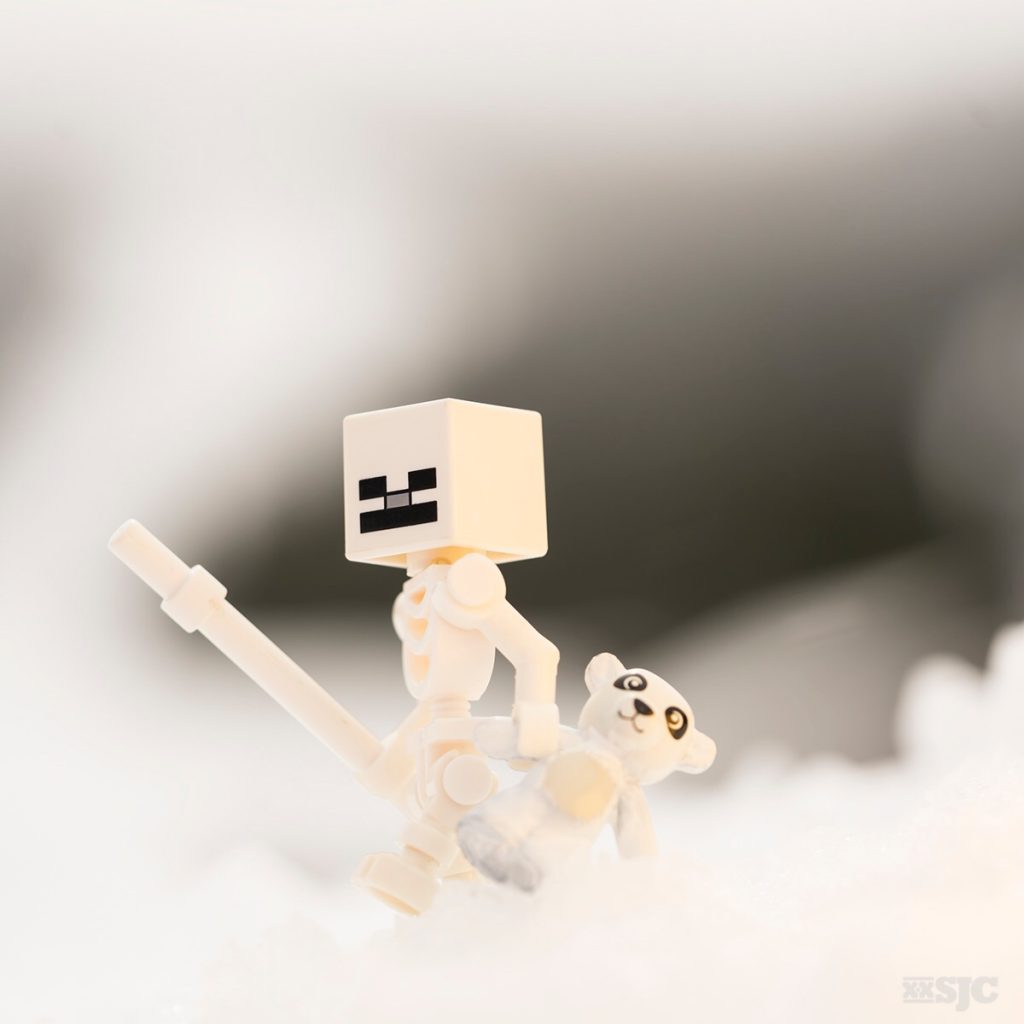
There is something special about the physical act of photographing something that renders it beautiful. Whether this is the intent of the photographer, a trick of the lens or the mechanics of a camera, I don’t know. All I know is that by being a photographer, I render the ugly beautiful, I elevate little bits of plastic to a place value, I change the very nature of my surroundings by capturing it with my camera.
That is a powerful position to be in.
After all these years the dots are connected and I feel a measure of peace. I will go forward creating beautiful images and I’ll feel good about it.
Because that is the nature of photography.
~ Shelly
I will readily admit that Ms. Sontag’s book, and the language and ideas within, are very polarizing. Feel free to add your voice to the conversation; let me know how you feel about beauty and its relationship to photography.
I’m looking for other photo books to read. Do you have any recommendations?


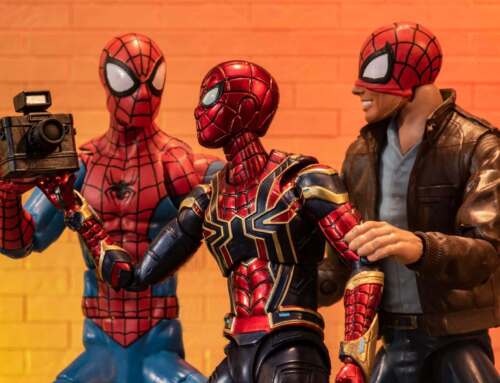
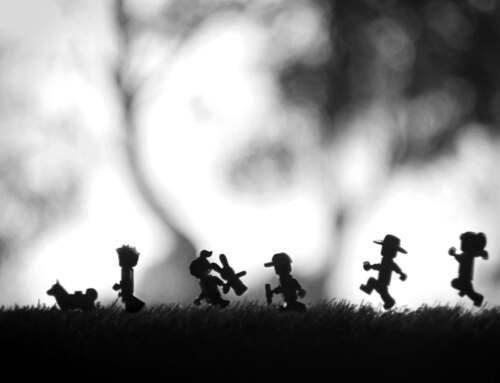
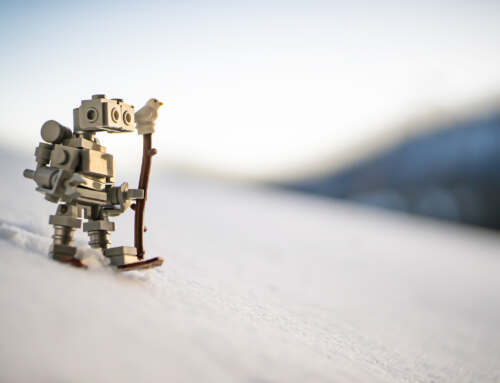
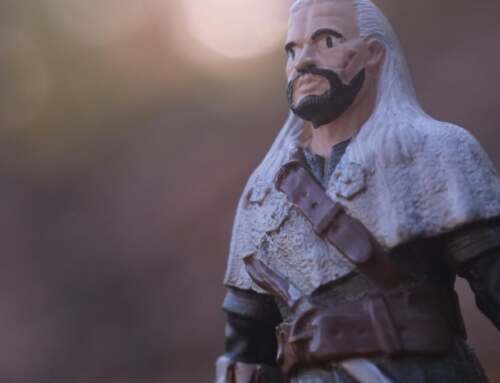
Thank you for sharing your insights. The reason I do photography is to slow down. I feel everyone around is is racing to some destination and they forget to stop and admire the beauty they blow past… I think that is why I was drawn into toy photography. Especially the use of Lego minifigures. They are small and I am forced to see the world in a new way from their level. I have found much beauty down in the dirt and at the base of bushes or the limbs of trees. The detail of nature wows me every time.
As for a book on photography; I haven’t read many. But there is a novel I have read over and over again that I think has influenced my photography on a small scale – it is Watership Down by Richard Adams. The visual descriptions of the scenes and life’s of rabbits have helped me to realize that whatever your subject, when you learn to recognize beauty in it, you find it.
Joe, thank you for your comment. Like you I enjoy macro photography because it forces me to slow down and really look. Plus a great excuse to explore the bret outdoors. But you know the already! I agree that there is nothing as beautiful as mother nature.
I want you to know that I loved Watership Down when I was a kid. I read it in my teens (maybe tweens) and it was so influential. I can never look at rabbits the same way again. Maybe its time to go back and re-read this classic? Thank you for reminding me of it!
On Photography is definitely on my ‘to read’ list. You’ve outlined it so wonderfully. When looking hard enough, beauty can be found in everything. And I think I can agree that that’s the nature of photography. I’m glad you’re comfortable in your photo purpose – a good purpose at that.
Jennifer – there is so much to recommend in On Photography. I know there is a fair amount of controversy about her language and some of the connections she makes. But even with that, I thought her observations were insightful and got me thinking about the act of photography and how we relate to the photograph. I know you will enjoy it. Im not sure if my purpose is to take beautiful photos or if beautiful photos are all a camera can take? Maybe when we really ‘look’ at a subject we’re bound to see the inherent beauty? I know that whatever the conclusion, I’m not qualified to judge. 🙂
Your words “photographing something that renders it beautiful” sums this post up so eloquently.
I’d never really thought about intentionally creating beauty, but scrolling through my IG feed, I now notice there aren’t many photos there that I wouldn’t consider beautiful. Maybe I’m lucky enough to follow photographers who already knew about this?
As you said, even the “ugly subject matter” of Brian McCarty’s war photography has a beauty to it.
Brett, I would challenge you to find a photo that isn’t beautiful! I can’t think of a photo that I have enjoyed, that isn’t beautiful. Maybe Im biased, but I find photography to be a beautiful medium. So the conundrum is, does the camera / lens create the beauty or are we simply discovering the beauty that is already there by looking through he camera? Or maybe I simply see beauty everywhere? More questions to ponder going forward…. 🙂
Thank you so much for sharing your thoughts, Shelly! It really made me reconsider On Photography which I read a while ago. I actually understood it as being against photography in a couple of ways:
1. Photographs, Sontag seems to claim, add beauty to the banal, unduly ascribing value even to the most worthless objects.
2. Photos can only show the past – show us as we were when we were younger. Therefore, they are essentially sentimental.
3. Photographs can never transcend reality; they are reality’s “death mask.”
The ultimate reason of Sontag’s refusal of photography (it seemed to me) is moral: A ‘good’ photographer, she seems to claim, would always choose the picture of the wounded child over helping the child. Photographs that criticise war inevitably thrive on the existence of wars.
I am going into this because my photography is partly motivated by the desire to prove Sontag’s allegations wrong, especially the third one in my list: There must be way of making photographs so abstract that they point beyond the immediate subject matter they show.
And I am going into this because you made me understand toy photography could discount of some of Sontag’s points: Are we stuck in reality? No, we create one! Do we need wars to make pictures opposing them? Not necessarily (as Jennifer showed us before)! Do we aestheticize the world? Again, no, because we make our own worlds, intrinsically aesthetic or not.
Does this make sense? I hope so.
But I also would like to answer your question concerning further reading: Especially after Sontag, I strongly recommend Roland Barthes’ La chambre claire (also available in English, I am sure; it’s a classic). It is not easy but worth the while, as Barthes arrives at some intresting points (before disappointingly ending with the insight that photographs are mostly about the past). There is also Michael Fried’s Why Photography Matters as Art as Never Before: Very interesting, but he lost me somwhere in his discussion of Heidegger’s ontology… I’ll give it another try one day.
Have a good week!
Tobias, Im not sure why I didn’t see your comment earlier, but I saw it this morning. Thank you so much for taking the time to leave such a thoughtful response. I have marked the two books you have recommended to my reading list. Thank you! I look forward to taking another deep dive.
I think that Kristina’s 52 week project is trying to move her photography to that point that is beyond her subject. What is beyond is somewhere between metaphor and surrealism. I think it is a beautiful place to play as a photographer and I admire her persistence.
What you wrote makes perfect sense. I think what we photographers have learned since Sontag wrote her seminal work is that photography can be whatever we want it to be. I think this is why it is both a powerful medium and one that is so accessible.
Seriously I love this comment. Let me know if you have anything else up your sleeve and would like to write a full blog post. I will be in touch. 🙂
This was such an interesting and inspiring read, thanks Shelly!
Thank Stephen! And thanks for heading back into the archives. Even a month ago seems like a world away these days. You should read back even more. I have three years of missives on here – some good, some not so good. 🙂
Oh yes, definitively… ^^ +1000
I think our toys are connected to another part of us, a splendid part. In this part, all is beautiful, it’s paradise… Even death is nice, even “nothing” is fine. It’s like a game to speak or let speaking this part of us, this part of toys, this part of child. Perhaps children “know” that and adults forget, or play then with fear. After fear, it’s like the Jedi, the Force find you and play. If fear play, it’s the Dark Side. If Beauty play, it’s the Light… Even the beauty in everything, you tell that so good in this text, thank you. Sometimes, fear must be travelled, to find the Force.
For a book, Wabi-Sabi is the same thing, and perhaps one for Art Wabi-Sabi. Leonard Koren. “Wabi-sabi for Artists, Designers, Poets & Philosophers”. Book by Leonard Koren.
Im so glad you agree! I looked up the books you recommended and I will be adding them to my book shelf immediately! Thanks for the recommendations! In fact Im sure a blog post will come out of it. Yeah for toys, and the beauty of toy photography! It is defiantly a way to connect with our inner child and remember those important lessons we’ve forgotten. 🙂
And I agree, we need both the light and the dark.
“I find that ugly thing … beautiful.” ~Powerful
Reading your article and then all the wonderful responses were very enlightening. Especially Tobias’ follow-up.
What I love about toyphotography, as has been mentioned, we create our own reality or fantasy as the case may be. We can make an impactful statement without real blood, et al.
I love where you went with your personal interpretation of her words… there is inherent beauty in all photographs… even the ugly ones… I’m thinking I might even base my Six Photo Narative on this… I’d been struggling on what to do with it.